
 This article discusses the construction of K-vampires in popular Korean television dramas, focusing on three series that feature central vampire characters: Vampire Prosecutor, a crime procedural running for two seasons in 2011 and 2012, its spin-off, Vampire Detective (2016) and a medical drama Blood (2015). The main protagonists in these series are all simultaneously vampires and members of professions designed to help humans: a lawyer, a detective and a surgeon. Constructed as parallel to humans, these vampires are portrayed as free-willed individuals striving to overcome their condition. The article argues that the humanisation of K-vampires can be seen as a hybridisation strategy blending the characterisation of the ‘reluctant’ vampires known from Western post-millennial fiction with some features of the Korean kumiho, a supernatural shape-shifting fox creature that desires to become human. The article also proposes to read the series in the Neo-Confucian context, particularly in relation to its social and gender norms. It argues that while the male vampires in the series function chiefly to deliver critique of Korean neoliberal society, with the heroes modelled on the virtuous seonbi scholars and the villains described as sociopathic capitalists, the female vampires are mostly portrayed as tragic heroines, vilified for their moral transgressions and redeemed through selfless sacrifice.
This article discusses the construction of K-vampires in popular Korean television dramas, focusing on three series that feature central vampire characters: Vampire Prosecutor, a crime procedural running for two seasons in 2011 and 2012, its spin-off, Vampire Detective (2016) and a medical drama Blood (2015). The main protagonists in these series are all simultaneously vampires and members of professions designed to help humans: a lawyer, a detective and a surgeon. Constructed as parallel to humans, these vampires are portrayed as free-willed individuals striving to overcome their condition. The article argues that the humanisation of K-vampires can be seen as a hybridisation strategy blending the characterisation of the ‘reluctant’ vampires known from Western post-millennial fiction with some features of the Korean kumiho, a supernatural shape-shifting fox creature that desires to become human. The article also proposes to read the series in the Neo-Confucian context, particularly in relation to its social and gender norms. It argues that while the male vampires in the series function chiefly to deliver critique of Korean neoliberal society, with the heroes modelled on the virtuous seonbi scholars and the villains described as sociopathic capitalists, the female vampires are mostly portrayed as tragic heroines, vilified for their moral transgressions and redeemed through selfless sacrifice.
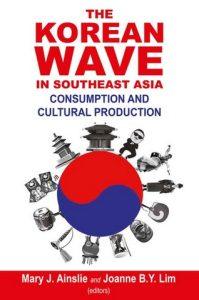 This paper examines Korean influences on contemporary Thai cinema in terms of genre development, narrative structure and co-production. It will discuss the emergence of the strong “masculinised” heroine in Thai comedies, re-configuration of the horror, comedy and action thriller genres, changes in the narrative strategies of 21st century Thai films, and the results of creative co-production between Thailand and Korea.
This paper examines Korean influences on contemporary Thai cinema in terms of genre development, narrative structure and co-production. It will discuss the emergence of the strong “masculinised” heroine in Thai comedies, re-configuration of the horror, comedy and action thriller genres, changes in the narrative strategies of 21st century Thai films, and the results of creative co-production between Thailand and Korea.
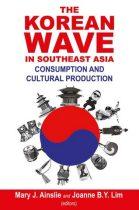

 This paper offers a reading of Anjaan: SCU as an example of Gothic television placed in the context of Globalgothic. The article situates Anjaan: SCU within a larger body of supernatural detective series, the genre that has contributed significantly to Asian television’s global presence, investigates the gothic themes employed in the creation of the show, both in terms of its narrative strategies and visual aesthetics, and examines the social construction of ghosts in the series. The article argues that the narrative structure of the show operating across legal and mythical dimensions serves a didactic purpose and that these modern reconfigurations of Indian ghost lore aim to dispense social critique and address controversial local issues, such as caste-based inequality, female infanticide, or ‘honour’ killings.
This paper offers a reading of Anjaan: SCU as an example of Gothic television placed in the context of Globalgothic. The article situates Anjaan: SCU within a larger body of supernatural detective series, the genre that has contributed significantly to Asian television’s global presence, investigates the gothic themes employed in the creation of the show, both in terms of its narrative strategies and visual aesthetics, and examines the social construction of ghosts in the series. The article argues that the narrative structure of the show operating across legal and mythical dimensions serves a didactic purpose and that these modern reconfigurations of Indian ghost lore aim to dispense social critique and address controversial local issues, such as caste-based inequality, female infanticide, or ‘honour’ killings.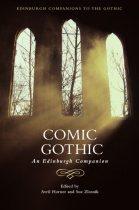
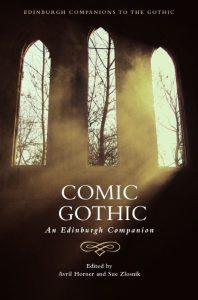 Humour has always been an integral part of Thai horror, a cinematic genre characterized by its internal hybridity and fluidity. Despite some attempts to align local productions with Western or Japanese horror, the majority of Thai horror films continue to mix scares with laughter, frequently featuring the ‘unholy trinity’ of ghosts, slapstick comedy and the kathoey – a Thai third gender category, often depicted in such productions in terms of the Gothic body that is simultaneously the site of ridicule and fear. This article examines the work of two directors who have embraced this approach – Poj Arnon and Yuthlert Sippapak. While Poj Arnon’s films have often been branded as tasteless and nonsensical, each of his 30-something productions has made a healthy profit, attesting to their popularity. In contrast, Yuthlert Sippapak’s works have baffled audiences at several international festivals and the director himself has been promoted as an inscrutable auteur. This article focuses on two major film series by these directors – Hor Taew Tak by Poj Arnon, and Buppah Rahtree by Yuthlert Sippapak. The article uses these films to illustrate a distinction between Thai horror comedies and Thai popular horror films, arguing that the comic elements are an indispensable part of their Gothic framework and a feature characteristic of Thai popular horror film in general.
Humour has always been an integral part of Thai horror, a cinematic genre characterized by its internal hybridity and fluidity. Despite some attempts to align local productions with Western or Japanese horror, the majority of Thai horror films continue to mix scares with laughter, frequently featuring the ‘unholy trinity’ of ghosts, slapstick comedy and the kathoey – a Thai third gender category, often depicted in such productions in terms of the Gothic body that is simultaneously the site of ridicule and fear. This article examines the work of two directors who have embraced this approach – Poj Arnon and Yuthlert Sippapak. While Poj Arnon’s films have often been branded as tasteless and nonsensical, each of his 30-something productions has made a healthy profit, attesting to their popularity. In contrast, Yuthlert Sippapak’s works have baffled audiences at several international festivals and the director himself has been promoted as an inscrutable auteur. This article focuses on two major film series by these directors – Hor Taew Tak by Poj Arnon, and Buppah Rahtree by Yuthlert Sippapak. The article uses these films to illustrate a distinction between Thai horror comedies and Thai popular horror films, arguing that the comic elements are an indispensable part of their Gothic framework and a feature characteristic of Thai popular horror film in general.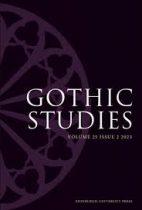
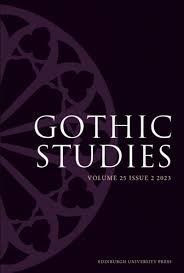 The waiting woman is a ghost who appears to be endlessly waiting – for recognition, for her lover, for a chance to reincarnate, or to exact revenge. In Asia, her roots can be found in early medieval Chinese records of the strange, arguably the oldest written ghost stories in the region. The romanticized version of this ghost, introduced in Tang Xianzu’s drama Peony Pavillion (Mudan ting, 1598), influenced many writers of Japanese kaidan (strange) stories and merged with East and Southeast Asian ghostlore that continues to inspire contemporary local fiction and films. The article proposes to read the figure of the waiting woman as a representation of the enduring myth of the submissive Asian femininity and a warning against the threat of possible female emancipation brought about by the socio-economic changes caused by modernisation.
The waiting woman is a ghost who appears to be endlessly waiting – for recognition, for her lover, for a chance to reincarnate, or to exact revenge. In Asia, her roots can be found in early medieval Chinese records of the strange, arguably the oldest written ghost stories in the region. The romanticized version of this ghost, introduced in Tang Xianzu’s drama Peony Pavillion (Mudan ting, 1598), influenced many writers of Japanese kaidan (strange) stories and merged with East and Southeast Asian ghostlore that continues to inspire contemporary local fiction and films. The article proposes to read the figure of the waiting woman as a representation of the enduring myth of the submissive Asian femininity and a warning against the threat of possible female emancipation brought about by the socio-economic changes caused by modernisation.
 This article discusses the construction of K-vampires in popular Korean television dramas, focusing on three series that feature central vampire characters: Vampire Prosecutor, a crime procedural running for two seasons in 2011 and 2012, its spin-off, Vampire Detective (2016) and a medical drama Blood (2015). The main protagonists in these series are all simultaneously vampires and members of professions designed to help humans: a lawyer, a detective and a surgeon. Constructed as parallel to humans, these vampires are portrayed as free-willed individuals striving to overcome their condition. The article argues that the humanisation of K-vampires can be seen as a hybridisation strategy blending the characterisation of the ‘reluctant’ vampires known from Western post-millennial fiction with some features of the Korean kumiho, a supernatural shape-shifting fox creature that desires to become human. The article also proposes to read the series in the Neo-Confucian context, particularly in relation to its social and gender norms. It argues that while the male vampires in the series function chiefly to deliver critique of Korean neoliberal society, with the heroes modelled on the virtuous seonbi scholars and the villains described as sociopathic capitalists, the female vampires are mostly portrayed as tragic heroines, vilified for their moral transgressions and redeemed through selfless sacrifice.
This article discusses the construction of K-vampires in popular Korean television dramas, focusing on three series that feature central vampire characters: Vampire Prosecutor, a crime procedural running for two seasons in 2011 and 2012, its spin-off, Vampire Detective (2016) and a medical drama Blood (2015). The main protagonists in these series are all simultaneously vampires and members of professions designed to help humans: a lawyer, a detective and a surgeon. Constructed as parallel to humans, these vampires are portrayed as free-willed individuals striving to overcome their condition. The article argues that the humanisation of K-vampires can be seen as a hybridisation strategy blending the characterisation of the ‘reluctant’ vampires known from Western post-millennial fiction with some features of the Korean kumiho, a supernatural shape-shifting fox creature that desires to become human. The article also proposes to read the series in the Neo-Confucian context, particularly in relation to its social and gender norms. It argues that while the male vampires in the series function chiefly to deliver critique of Korean neoliberal society, with the heroes modelled on the virtuous seonbi scholars and the villains described as sociopathic capitalists, the female vampires are mostly portrayed as tragic heroines, vilified for their moral transgressions and redeemed through selfless sacrifice.
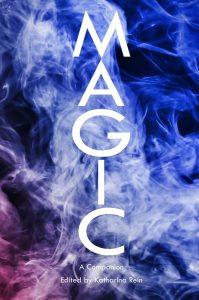 Khmer magic holds a prominent place in Thai imaginary and is often portrayed in films. This article will discuss the most common portrayals of Khmer black magic in Thai popular cinema – from horror films to action and adventure genres. The main films discussed here will be the Art of the Devil trilogy (Khon len khong, 2004, Long khong, 2005, and Long khong 2, 2008), with references also made to such productions like Necromancer (Chom khamang wet, 2005) and Khun Pan (2016) and Khun Pan 2 (2018). The article argues that while the cinematic portrayals of Khmer magic provide opportunities to engage in a graphic spectacle of violence, their depictions are also consequently gendered, with female practitioners being labelled as ‘evil’ and male practitioners using magic to assert their masculinity.
Khmer magic holds a prominent place in Thai imaginary and is often portrayed in films. This article will discuss the most common portrayals of Khmer black magic in Thai popular cinema – from horror films to action and adventure genres. The main films discussed here will be the Art of the Devil trilogy (Khon len khong, 2004, Long khong, 2005, and Long khong 2, 2008), with references also made to such productions like Necromancer (Chom khamang wet, 2005) and Khun Pan (2016) and Khun Pan 2 (2018). The article argues that while the cinematic portrayals of Khmer magic provide opportunities to engage in a graphic spectacle of violence, their depictions are also consequently gendered, with female practitioners being labelled as ‘evil’ and male practitioners using magic to assert their masculinity.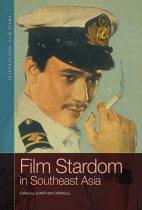
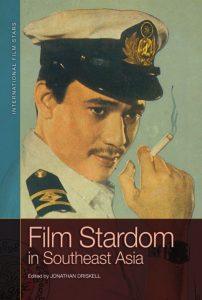 This chapter examines the specific positioning of martial arts stars within cinema and investigates the gendered construction of the female martial artist. It discusses the development of the muay thai film as a specifically Thai contribution to martial arts cinema and the genre’s vindication of the ideological construction of muay thai as an expression of heroic masculinity and patriotism. The chapter focuses on Jeeja Yanin to examine how the introduction of a female muay thai star affects the heroic/nationalistic narrative of Thai muay thai cinema and how this, in turn, affects the construction of Jeeja’s star image.
This chapter examines the specific positioning of martial arts stars within cinema and investigates the gendered construction of the female martial artist. It discusses the development of the muay thai film as a specifically Thai contribution to martial arts cinema and the genre’s vindication of the ideological construction of muay thai as an expression of heroic masculinity and patriotism. The chapter focuses on Jeeja Yanin to examine how the introduction of a female muay thai star affects the heroic/nationalistic narrative of Thai muay thai cinema and how this, in turn, affects the construction of Jeeja’s star image.
 The chapter offers a selective survey of twenty-first-century Asian Gothic. The main focus of the discussion is the most prominent contemporary trend involving reconfigurations of Asian folklore and the ghost story. More specifically, this chapter investigates literary and film narratives dealing with individual and collective trauma that revolve around the figure of the vengeful ghost, texts which reclaim animism as inherent part of Asian modernity, and Asian Gothic’s interrogation of gender dynamics and empowered women. The first section of the essay discusses the emergence of the female vengeful ghost as the dominant figure of fear in Asian horror films. The second section examines the portrayal of ghosts in literature of the region and the way their haunting engages with historical trauma and socio-cultural anxieties of the time. The final part investigates narratives that highlight the connection of women to shamanism and magic and proposes to read female spirituality in terms of empowerment.
The chapter offers a selective survey of twenty-first-century Asian Gothic. The main focus of the discussion is the most prominent contemporary trend involving reconfigurations of Asian folklore and the ghost story. More specifically, this chapter investigates literary and film narratives dealing with individual and collective trauma that revolve around the figure of the vengeful ghost, texts which reclaim animism as inherent part of Asian modernity, and Asian Gothic’s interrogation of gender dynamics and empowered women. The first section of the essay discusses the emergence of the female vengeful ghost as the dominant figure of fear in Asian horror films. The second section examines the portrayal of ghosts in literature of the region and the way their haunting engages with historical trauma and socio-cultural anxieties of the time. The final part investigates narratives that highlight the connection of women to shamanism and magic and proposes to read female spirituality in terms of empowerment.
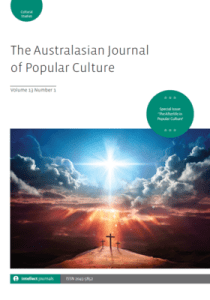 Gothic has long been theorized as the domain of the feminine, the queer or the ‘soft masculine’, and most discussions of Gothic masculinity propose to see it in terms of a split of the masculine subject at the level of rationality and sexuality. This article examines the construction of Gothic masculinities in the films of the Thai director Kongkiat Khomsiri in the context of the Thai gender system and Thai heroic masculine ideologies their protagonists embody. While Thai horror films abound in depictions of feminine evil, interestingly the Gothic cinescapes of Khomsiri are the domain of tough masculine men. The article discusses the director’s first three features: Chaiya (2007), Slice (2009), and The Gangster (2012), bringing into focus the films’ portrayals of their working-class underdog heroes and their ‘hard’ masculinity. The discussion also highlights the visual aesthetics of Khomsiri’s films and their reliance on the Gothic conventions in the construction of the characters and the environments they inhabit.
Gothic has long been theorized as the domain of the feminine, the queer or the ‘soft masculine’, and most discussions of Gothic masculinity propose to see it in terms of a split of the masculine subject at the level of rationality and sexuality. This article examines the construction of Gothic masculinities in the films of the Thai director Kongkiat Khomsiri in the context of the Thai gender system and Thai heroic masculine ideologies their protagonists embody. While Thai horror films abound in depictions of feminine evil, interestingly the Gothic cinescapes of Khomsiri are the domain of tough masculine men. The article discusses the director’s first three features: Chaiya (2007), Slice (2009), and The Gangster (2012), bringing into focus the films’ portrayals of their working-class underdog heroes and their ‘hard’ masculinity. The discussion also highlights the visual aesthetics of Khomsiri’s films and their reliance on the Gothic conventions in the construction of the characters and the environments they inhabit.